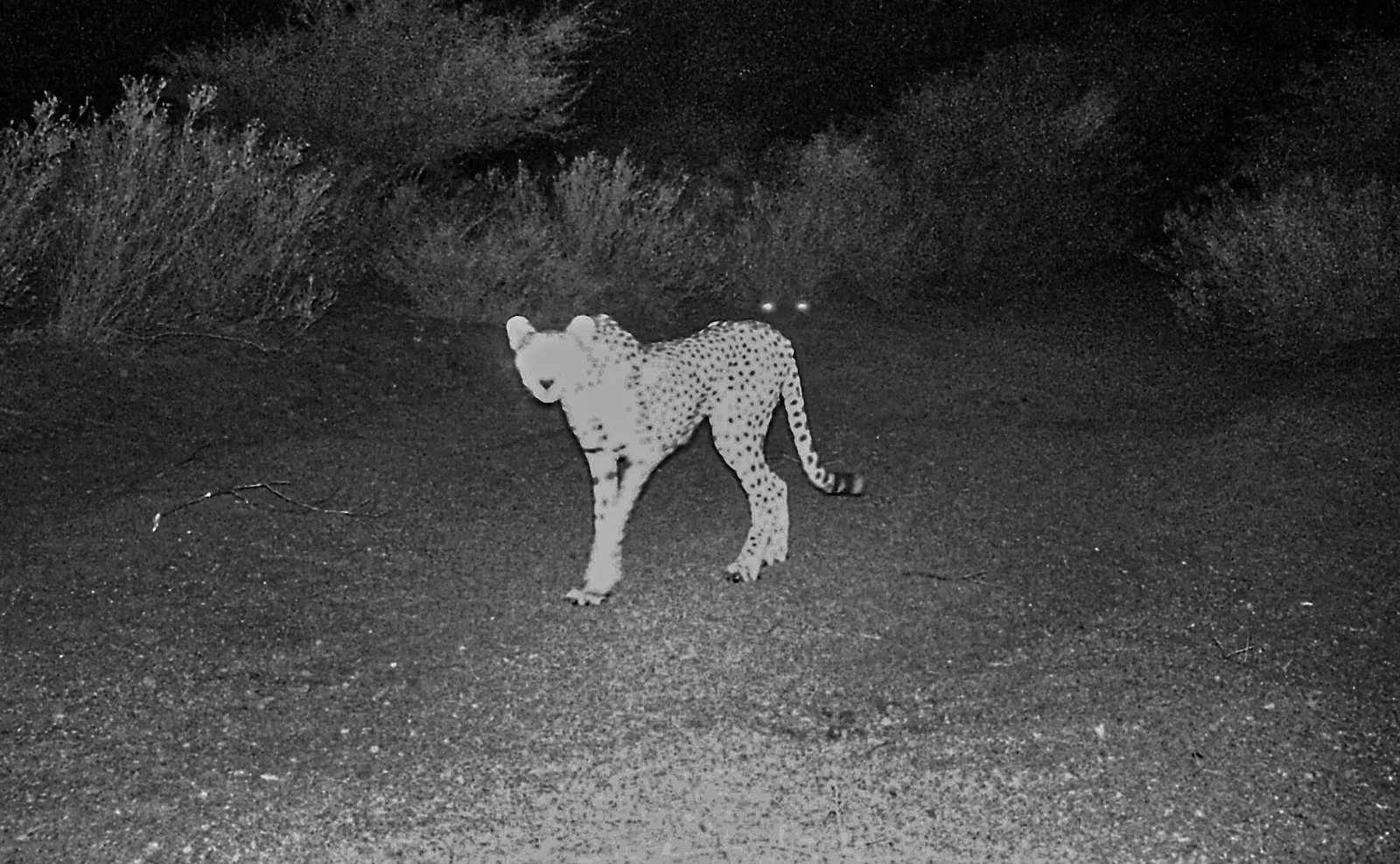Spotted: USU Professor Leads Effort to Capture Image of Long-Missing African Cheetah
By Lael Gilbert |
(Photo Credit: Ronda Gregorio/Smithsonian National Zoo)
Perched on the northeastern coast of Africa, the tiny country of Djibouti is a place of extremes. Rugged mountains soar to the north, while near the coastline a saline lake sinks more than 500 feet below sea level. Desert claims 90 percent of the country’s arid landscape, while the majority of residents live clustered in dense urban areas around the capital city.
What Djibouti doesn’t have, anymore, are wild cheetahs. Sightings of the cats haven't been confirmed for more than three decades — until recently. Wildlife professor Mark Chynoweth, from the Quinney College of Natural Resources, was a leader of a survey team that captured the first images of a cheetah in the country since 1997.
Ecologically speaking, Djibouti is a little-studied country with high biodiversity. A growing human population has changed ecosystems rapidly over the past few decades, creating big impacts for the big cat.
Formerly widespread throughout much of Africa and southwestern Asia, cheetahs are a species that require a lot of space. They move across hundreds or even thousands of miles during a lifetime, making them especially vulnerable to interruptions in habitat by roads and development and by loss of open space. Wild cheetahs are now found on less than one tenth of their historic range across the two continents and are tumbling toward an official listing as endangered by the International Union for Conservation of Nature.
Across the Horn of Africa, particularly in Ethiopia and Somalia (countries neighboring Djibouti), the poaching of cheetah cubs is another major blow to surviving populations. Run-ins with people and livestock, the shrinking availability of prey food and a diminished genetic pool also act as obstacles to the remaining cats’ survival.
Chynoweth traveled to Djibouti in consultation with HawkWatch International on a mission to document biodiversity in the area. He led a specialized mammal monitoring team in 2022 and deployed 48 camera traps near thickets, in dry washes and other places where mammals were likely to congregate. The team’s collective efforts stretched from Djibouti City to Galafi over two periods in 2021 and 2022.
“We arrived with the idea to try to avoid areas with high human activity,” he said. “But that turned out to be really difficult, given how many people lived near the sites we surveyed.”
Despite security measures, 20% of the team’s cameras were stolen or destroyed, and 10% malfunctioned in the extreme heat. But the units that survived captured hundreds of images of the local wildlife: pictures of a lynx-like caracal, spotted and striped hyena, dorcas gazelle, gerenuk (giraffe-gazelle), and a tiny antelope-like Salt’s dikdik.
And at the end of March 2022 two photo bursts captured images of a single cheetah on the Digri Plateau.
“We photographed the highest diversity of species and the most activity on the Digri Plateau compared to the rest of the study area,” Chynoweth said. “This could suggest that this particular region has a large enough population of prey animals to support a cheetah population.”
But that doesn’t mean cheetahs are necessarily returning to Djibouti for the long-term. This was the first survey of this type in the country, and results should be considered preliminary, he warned.
“There are important conservation implications for previously unrecorded species in the country,” Chynoweth said. “We need a lot of further survey work here, as well as in other habitats that seem like they could support a cheetah population. It’s unclear if the individual cheetah we recorded was alone, or if there may be others in the area to support a breeding population,” he said.
A camera trap from a team led by QCNR's Mark Chynoweth caught an image of the first cheetah in Djibouti in more than three decades. (Photo Credit: Mark Chynoweth)
WRITER
Lael Gilbert
Public Relations Specialist
Quinney College of Natural Resources
435-797-8455
lael.gilbert@usu.edu
CONTACT
Mark Chynoweth
Assistant Professor
Department of Wildland Resources
mark.chynoweth@usu.edu
TOPICS
Research 901stories Ecology 174stories World 121stories Animals 92stories Conservation 84stories International 63storiesComments and questions regarding this article may be directed to the contact person listed on this page.









